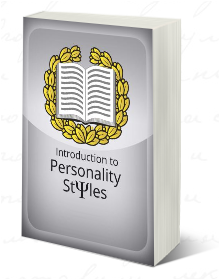Depersonalization-Derealization Test
You are here because one of your friends linked you to their Depersonalization-Derealization Test result:
Take the TestYour friend's results:

Your friend's tendency to depersonalize/derealize is high (69.94%).
Take the TestExplanation of Elements:
Depersonalization: Depersonalization is the sensation of detachment from one’s self and identity; it can be described as alterations in our perception of ourselves. One might feel like an outside observer in relation to our thoughts, feelings, actions, memories, or sense of body, self, and identity. One feels like their feelings and sensations aren’t their own, as if one is outside their own body or they are an observer detached from their own mental processes and body.
Derealization: Derealization is the sensation of detachment from one’s surroundings and can be described as an alteration in our perception of our external world, where individuals or objects feel dreamlike, unreal, distorted, foggy, or illusory while lacking in emotional coloring and depth. Thus, depersonalization is specifically a sense of detachment from one’s self and one's identity, whereas derealization is when things or people around one may seem unreal.
Total Depersonalization-Derealization: This is your total tendency to depersonalize and derealize. High scores may indicate inclinations toward dissociative disorders marked by symptoms such as the following:
- Detachment from your own feelings
- Distorted body image and/or distorted bodily sensation
- Loss of sensation in different parts of your body
- Feeling unreal and/or like a spectator in your own life
Experiencing dissociation is common. We may sometimes find ourselves daydreaming or zoning out while watching TV, or we’re not cognizant of someone talking to us, as if we’re in a bubble and only half-conscious. Such occurrences are considered normal and are often caused by tiredness, stress, or lack of sleep.
On the other hand, if you experience the above symptoms and they represent invasive, recurring events causing significant distress and impairment in social contexts or important areas of functioning, it would be advisable to address such challenges with a mental health professional.
References
- Cernis E, Beierl E, Molodynski A, Ehlers A, Freeman D. A new perspective and assessment measure for common dissociative experiences: 'Felt Sense of Anomaly'. PLoS One. 2021 Feb 24;16(2).
GET THE FULL STORY
Become a lifetime member with a one-time payment
WHAT YOU GET
Access to premium, members-only tests
Access to all of our eBooks (value $44.94)
Access to 100s of premium articles
Access to 100s of premium type assessments
Access to premium infographics
New content continuously added
Become a memberGET THE FULL STORY
Manual of Personality Styles
WHAT YOU GET
71-page manual, explaining the make-up of all personality styles, their hidden drives, and the theory behind the system.
Presented in an easy-to-read style and backed up by solid academic references.
14-day, no-questions-asked, money-back guarantee.
Order Now
